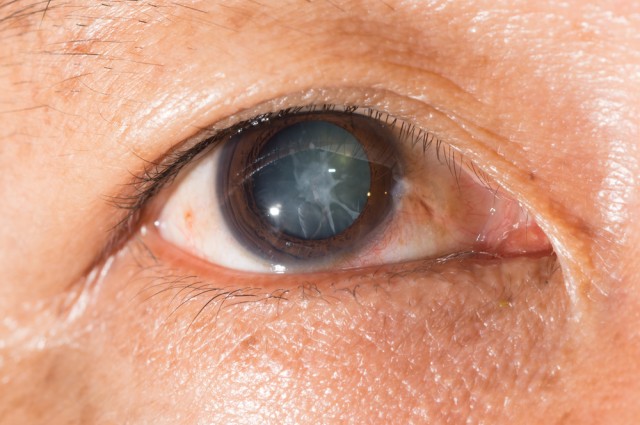Cataracts is the leading cause of blindness worldwide. The only option for those affected is surgery, an expensive and invasive procedure that’s unavailable to many in the developing world. But perhaps we’re not too far off from changing that, as another study is dangling the possibility of using eye drops as a viable alternative, potentially offering a practical treatment to the 20 million or so people affected worldwide.
Cataracts, or cloudy lenses, arise when lens proteins called crystallins begin to twist into the wrong conformation and clump together. Crystallins, a major constituent of the lens’ fiber cells, normally help keep the lens transparent by preventing proteins from forming aggregates that diffract incoming light. They do this by acting as molecular “chaperones” that maintain the solubility of lens proteins.
As we age, these crystallin proteins can become damaged and consequently cluster into fibers much like what we see in the brains of those with Alzheimer’s. Unfortunately, these tangles of protein are much more stable than the normal, native form, and since you stop making crystallins when you’re born, their formation depletes the eye of healthy, functional versions.
Armed with this knowledge, authors of the current study, published in Science, went on a hunt for drug compounds that could act as “pharmaceutical chaperones,” molecules that stick to and stabilize the natural state of a protein. Specifically, they wanted chemicals that could selectively hang on to the soluble form of crystallin proteins and thus prevent them from clumping together.
A key piece of information aided this search: The melting point of crystallins increases as they aggregate together. The researchers scoured thousands of molecules using a high-throughput technique that basically causes proteins to fluoresce when their melting point is reached, looking for chemicals that could lower this property to within the range of normal crystallins. Eventually, they found one that belonged to the same group as a promising compound identified earlier this year that scientists also think could treat cataracts.
Encouragingly, in cells grown in petri dishes, this molecule – so far only named “chemical 21” – dissolved clumps that had already formed and also helped prevent these bundles from forming in the first place. Moving on to animals, they tested out mice both genetically predisposed to cataracts, much like humans with hereditary cataracts caused by gene mutations, and also elderly mice with age-related cataracts. Applied as eye drops, the chemical successfully reduced the cloudiness of the lens, a feat also achieved in affected lenses surgically removed from human subjects.
But before we get ahead of ourselves, the tests couldn’t prove that vision actually improved in the animals, only that transparency was increased. Further tests are therefore needed, but it’s certainly a step in the right direction. Not only that, but the similarities of clumpy crystallin and the aggregates found in the brains of Alzheimer’s and Parkinson’s patients tantalizingly suggests the possibility of using this compound in diseases other than cataracts.
This work is the result of a collaboration between the University of California, San Francisco, the University of Michigan, and Washington University in St. Louis.
Fuente: www.iflscience.com
